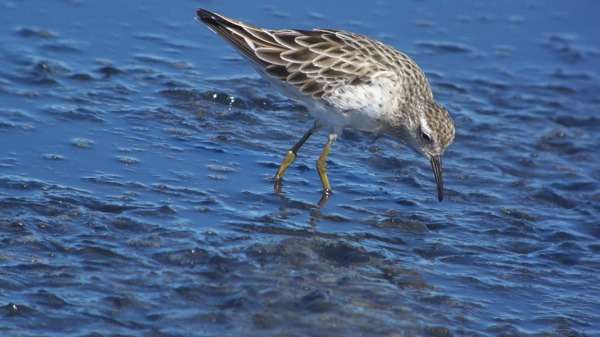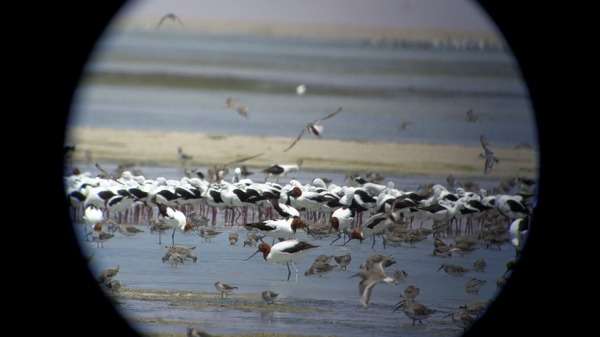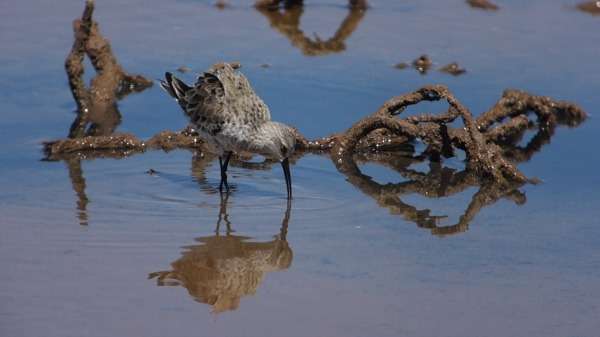Saltworks provide unlikely rest stop for migrating shorebirds

Industrial saltworks in the Pilbara and an unusual saltwater lake in the Gascoyne have been identified as unlikely but important pit stops and feeding grounds for migrating shorebirds.
Banding by scientists and the bird watching fraternity shows some shorebird species migrate as far south as New Zealand and north to the Arctic Tundra every year, stopping to feed in suitable places.
These journeys mean the birds travel the equivalent of the distance around the globe every two years and some take time to recover from their travels in WA's northwest.
While human activity decreases the number of habitats available to migrating birds, Dampier Salt's industrial sites can actually help them, Edith Cowan University shorebird ecologist Sora Estrella says.
Dampier Salt Ltd, which funded the study, produces salt by letting seawater into shallow artificial ponds near Port Hedland, Dampier, Karratha and Lake Macleod, letting the water evaporate before harvesting the salt with machinery.
Dr Estrella says these ponds provide habitats for marine life and an alternative opportunity for shorebirds to feed at high tide when metres of sea water usually cover the crustaceans, worms and clams they target.
At the Port Hedland operations marine worms were the main dining choice for all shorebird species and in the water column brine shrimp were also important diet components.

"Brine shrimp were prey for small-sized migratory shorebirds like red-necked stints (Calidris ruficollis), curlew sandpipers (Calidris ferruginea) and sharp-tailed sandpipers (Calidris acuminata)," she says.
"Big flocks of thousands of banded stilts (Cladorhynchus leucocephalus) were also observed feeding on the brine shrimp."
She says the Port Hedland operations are popular eateries for travelling bar-tailed godwits (Limosa lapponica), while the operation also attracts the highest numbers of broad-billed sandpipers (Limicola falcinellus) in Australia.
"In Dampier operations the small sized shorebirds (red-necked stint, sharp-tailed sandpipers and curlew sandpipers) were observed feeding on small crustaceans and worms, bar-tailed godwits on worms," she says.
She says these sites alone were able to provide enough energy for small-sized shorebirds arriving from the north to survive.

However, just before migrating north they needed to put on more body fat, and the saltworks did not provide enough prey for them to do this.
So they also feed along the seashore at low tide, and at Lake Macleod near Carnarvon which is one of only three seawater lakes in the world, providing shorebirds with a restaurant that is open all hours.
Provided by Science Network WA
This article first appeared on ScienceNetwork Western Australia a science news website based at Scitech.

















